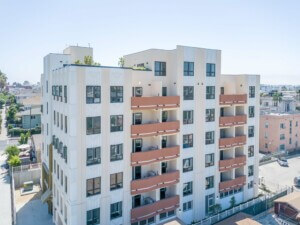Andy Warhol very likely attended art classes in the Hall of Architecture at the Carnegie Museum of Art. The Hall of Architecture is a star attraction at the Pittsburgh museum, a manifestation of Andrew Carnegie’s instruction to bring the world to the people of Pittsburgh. An eclectic troupe of fragments considered seminal for design practice in the early 20th century, the Hall of Architecture may well have seemed both glamorous and anachronistic to teenage Warhol: glamorous in its array of iconic monuments from Europe and the Middle East, anachronistic as the very concept of plaster casts was antithetical to High Modernist mores, to the cult of function and originality.
In Plaster Monuments, Mari Lending takes her readers on a richly informative tour of this curious yet once vanguard world of architectural casts and their presentation in some of the world’s most prestigious museums. Pittsburgh has survived, perhaps as the Carnegie was not so infatuated with the diktats of Modernism. In London, the Cast Courts with their bifurcated cast of Trajan’s Column remain in situ at the heart of the Victoria and Albert Museum; and much of French architectural history is still present in Paris, in what is now the Cité de l’architecture & du patrimoine, at the Trocadéro.
Nevertheless, other collections, like those in Boston and Brussels, have long been abandoned or dispersed. “Only a decade,” Lending writes of the Metropolitan Museum of Art, “after ‘THE MOST IMPORTANT COLLECTION OF CASTS IN ANY PART OF THE WORLD’ was installed in New York City, taste—as well as fortunes—was changing, and in 1905 the position of curator of casts was abolished…The biggest collection of Parthenon casts in the world,” she notes wryly, “survived a 1937 referendum when the people of Basel suggested drowning it all in the Rhine.” Happily, Pittsburgh held out against these slings and arrows of architectural and museological fashion.
Lending is Norwegian, a professor of history and theory at the Oslo School of Architecture and Design; she has also recently published a book with Peter Zumthor titled A Feeling of History. In her introduction, she posits Plaster Monuments “within the emerging scholarly field of architecture exhibitions.” For Lending, the past seems to shadow the present, toying with memory and assumptions of linear progress or of a fixed canon. She makes connections not only with the 19th-century museum and architectural theory but with such diverse contemporary technical and political phenomena as photography and colonialism.
The book divides into five chapters—spanning, back and forth, across two centuries—plus a coda bringing Lending’s account into our era of digital reproduction. She starts with the Grand Tour and a watercolor, Student Surveying the Temple of Jupiter Stator at Rome, commissioned by John Soane and exhibited—along with twenty-one casts and many drawings, paintings, and engravings—in Soane’s own museum in London.
Soon the French are leading the way, at the École des Beaux Art and the Trocadéro (originally the Musée de sculpture comparée). Lending describes the rivalry of Classicists and Romanticists, with the Trocadéro’s Viollet-le-Duc being assaulted at the École by eggs and apples and donkey brays. For the French, casts played a critical role not only for education but also the establishment of national identity. By the time the Met embarked on its collection, these Paris institutions possessed molds to produce multiple new casts. In addition, an entire profession of cast-makers—the formatori—existed to supply museums and private collectors.
In Pittsburgh, Carnegie boldly envisaged architecture at the heart of his museum/library/music hall complex, in a roof-lit hall modeled on the Mausoleum of Halicarnassus. Lending emphasizes the speed with which this was achieved, in part due to the frequent use of transatlantic cablegrams. The Carnegie determined its selection through correspondence with two dozen contemporary architects, many inspired by H.H. Richardson. Thus its signature cast of the Romanesque church of Saint-Gilles-du-Gard, facilitated by a personal gift from Carnegie and transported from France in 95 crates.
Lending’s final chapter sets up a duality at Yale: Josef Albers versus Paul Rudolph. She quotes Albers stating that “the French Beaux-Arts casts had no place in the methods of the German Bauhaus.” Only a few years after their banishment however, Rudolph incorporated many of these casts—outcasts?—into his Art and Architecture Building, itself a monumental cast of hand-hammered concrete. Whereas Charles Jencks once criticized the building as a “four million dollar architectural potpourri” with “tasteless exhibits”, Timothy Rohan recently suggested that Rudolph’s inclusion of the casts “may have been an instance of homosexual camp.”
Sounding positively Warholian, Landing writes in her coda to Beaux Arts cast culture that “copying was a serious matter.” Can newer technologies now allow facsimiles to replace lost or destroyed works, as with the replica of the Palmyra arch erected in Trafalgar Square in 2016? Plaster Monuments sets the context for many such future discussions.
Plaster Monuments
Mari Lending
Published by Princeton University Press, $39.99











